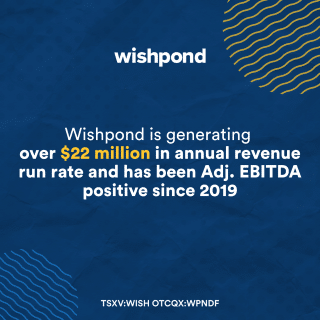
Whoop is a technology company that specializes in wearable fitness and health tracking devices. Founded in 2012 by Will Ahmed, John Capodilupo, and Aurelian Nicolae, the company is headquartered in Boston, Massachusetts. Whoop has gained popularity and recognition in the health and fitness industry for its advanced wearable technology, which focuses on monitoring and improving athletic performance and overall well-being. For more on a potential Whoop IPO, see below.
The core product of Whoop is its fitness tracker, known as the Whoop Strap. Unlike many traditional fitness trackers that primarily count steps or track physical activities, the Whoop Strap delves deeper into physiological data. It continuously monitors a user’s heart rate, heart rate variability, ambient temperature, and motion, providing insights into aspects like workout strain, recovery, and sleep quality. The emphasis of Whoop’s technology is on optimizing athletic performance and recovery by understanding the body’s stress and rest cycles.
A distinguishing feature of Whoop’s offering is its subscription-based model. Instead of purchasing the device upfront, users subscribe to a service that provides them with the Whoop Strap and access to the accompanying analytics platform. This platform, accessible via a mobile app, interprets the data collected by the strap and provides users with detailed insights and recommendations. The analytics focus on three main areas: strain, which measures the exertion of the user’s activities; recovery, which assesses how ready the body is for strain based on sleep and physiological markers; and sleep performance, which analyzes sleep quality and offers guidance on sleep optimization.
Whoop’s target audience includes professional athletes, fitness enthusiasts, and individuals keen on understanding and improving their physical performance and health. The company has formed partnerships with professional athletes, sports teams, and leagues, which has helped boost its visibility and credibility in the athletic world. These partnerships have also allowed Whoop to refine its product based on high-performance athletic data.
In terms of market positioning, Whoop differentiates itself from other fitness trackers through its focus on comprehensive wellness analytics rather than just activity tracking. This emphasis on detailed physiological data and personalized insights into recovery and readiness is what sets Whoop apart in the competitive landscape of wearable technology.
Whoop has evolved over the years, continually improving its hardware and software based on user feedback and advances in technology. The company has raised significant funding, reflecting investor confidence in its business model and growth potential in the booming market of health and fitness technology.
Overall, Whoop represents a blend of sophisticated wearable technology, data analytics, and personalized health insights, targeting those who seek an in-depth understanding of their physical performance and well-being.
Whoop IPO?
According to the website Access IPOs, there is no hard and fast timeline for a Whoop IPO. But the site suggests that patience from investors, including including Kevin Durant, Larry Fitzgerald, Patrick Mahomes, Eli Manning, Rory McIlroy, and Justin Thomas, may be wearing out.
“WHOOP’s most recent funding round was a Series F, suggesting venture capital investors may start getting anxious about exiting their investment. However, WHOOP is growing and may need future funding rounds to perfect its product and onboard talent for long-term growth.”
The company’s VC investors read like a Who’s Who, including the Foundry Group, Two Sigma Ventures, Softbank Vision Fund, Collaborative Fund, IVP, Cavu Ventures, Thursday Ventures, GP Bullhound, and NextView Ventures.
Whoop Competitive Advantage
Whoop’s competitive advantage in the health and fitness technology market is largely attributed to its unique approach to wearable fitness tracking and its focus on comprehensive wellness analytics. Unlike many traditional fitness trackers that concentrate on basic metrics like steps and distance, Whoop provides a deeper analysis of physiological data, offering users insights into their workout strain, recovery, and sleep quality.
One of the key strengths of Whoop is its sophisticated data analytics capability. The Whoop Strap continuously monitors a range of physiological metrics including heart rate, heart rate variability, ambient temperature, and movement. This data is then analyzed to provide users with actionable insights on their physical exertion, recovery needs, and sleep patterns. By focusing on these comprehensive wellness metrics, Whoop caters to individuals who are serious about optimizing their athletic performance and overall health, going beyond what typical fitness trackers offer.
Another aspect of Whoop’s competitive edge is its subscription-based business model. Instead of purchasing the device outright, users subscribe to receive the Whoop Strap along with access to the analytics platform. This model ensures that users always have the latest version of the strap and can continuously benefit from updates and improvements to the software and analytics. This subscription approach, which includes continuous support and upgrades, can enhance customer loyalty and engagement.
Whoop’s focus on recovery and readiness is particularly distinctive. In the world of athletics and fitness, understanding when to rest and how to recover is as crucial as knowing how to train. Whoop’s emphasis on recovery analytics helps users prevent overtraining and injuries, which is a critical aspect often overlooked by other fitness trackers.
The company has also established credibility and visibility through partnerships with professional athletes, sports teams, and leagues. These partnerships not only serve as powerful marketing tools but also allow Whoop to refine its product based on feedback and data from high-performance athletes. This continual refinement and focus on elite athletic performance make the Whoop Strap appealing not just to professional athletes but also to fitness enthusiasts who want to train like professionals.
In addition, Whoop’s user interface and the community aspect of its app also contribute to its competitive advantage. The app is designed to be user-friendly and engaging, encouraging users to regularly check their data and track their progress. Features like community challenges and the ability to share data with coaches or trainers enhance the user experience and foster a sense of community among Whoop users.
In summary, Whoop’s competitive advantage lies in its detailed wellness analytics, subscription-based model, focus on recovery and readiness, partnerships with elite athletes and teams, continuous product refinement, and engaging user interface. These factors set Whoop apart in the crowded wearable technology market and appeal to users who are serious about understanding and improving their athletic performance and overall health.
Whoop competitors
Whoop operates in the competitive market of wearable fitness and health technology, where it faces several notable competitors. Each of these rivals brings different features and focuses to the table, catering to diverse consumer needs in the fitness and health tracking domain.
- Fitbit: One of the most recognized names in the fitness tracker market, Fitbit offers a range of wearable devices that track steps, distance, calories burned, sleep, and heart rate. Fitbit devices are known for their user-friendly interface and comprehensive health tracking capabilities. They appeal to a broad consumer base, from casual fitness enthusiasts to serious athletes.
- Garmin: Renowned for its GPS technology, Garmin has a strong presence in the fitness tracker and smartwatch market, particularly among outdoor and athletic enthusiasts. Garmin devices are known for their durability, precision in tracking, and detailed data analytics, especially for running, cycling, and swimming.
- Apple Watch: Apple’s entry into the wearable market has made a significant impact. The Apple Watch is not only a smartwatch but also serves as a comprehensive health and fitness device. It tracks a wide range of health metrics, including heart rate and ECG, and offers integration with various health and fitness apps.
- Polar: A long-established brand in heart rate monitoring, Polar offers a range of fitness watches and heart rate monitors. Polar devices are particularly favored by professional athletes and coaches for their accuracy in heart rate monitoring and detailed training insights.
- Suunto: Known for its sports watches, dive computers, and precision instruments, Suunto appeals to the fitness and adventure sports market. Their devices are known for robust build quality and detailed tracking features, particularly for activities like hiking, trail running, and diving.
- Oura Ring: A unique competitor, Oura offers a ring that tracks sleep, activity, and readiness. The Oura Ring stands out for its discreet form factor and focus on sleep and recovery analytics, which is a niche that has seen growing interest.
Each of these companies competes with Whoop in certain aspects of fitness and health tracking. Fitbit and Apple Watch are strong in the general consumer market, offering a broad range of health tracking features. Garmin and Polar cater more to outdoor enthusiasts and professional athletes with their focus on precision and detailed sports analytics. Suunto appeals to adventure sports enthusiasts with its rugged and specialized devices. Oura offers a different approach with its focus on sleep and recovery, packaged in a discreet ring form factor.
While each of these competitors has its strengths, Whoop differentiates itself with its emphasis on detailed physiological data, recovery, and sleep analysis, and its subscription model that provides continual updates and improvements to both hardware and software.




 Share
Share Tweet
Tweet Share
Share




Comment